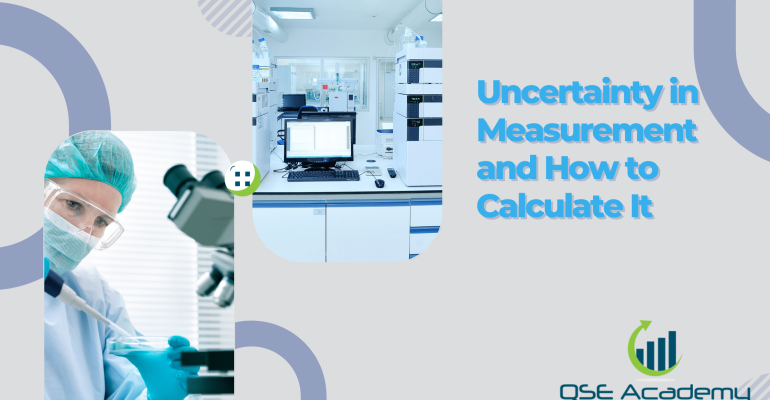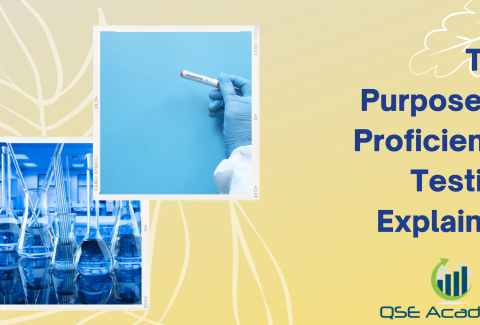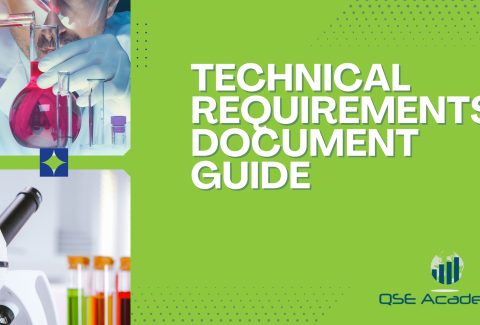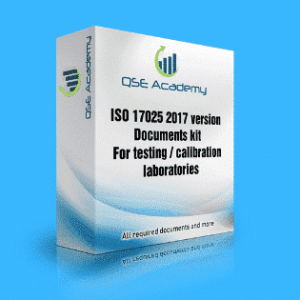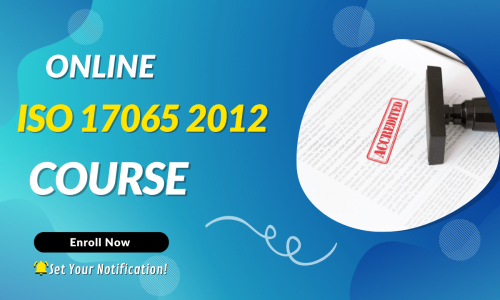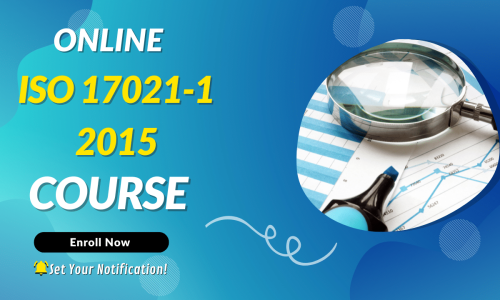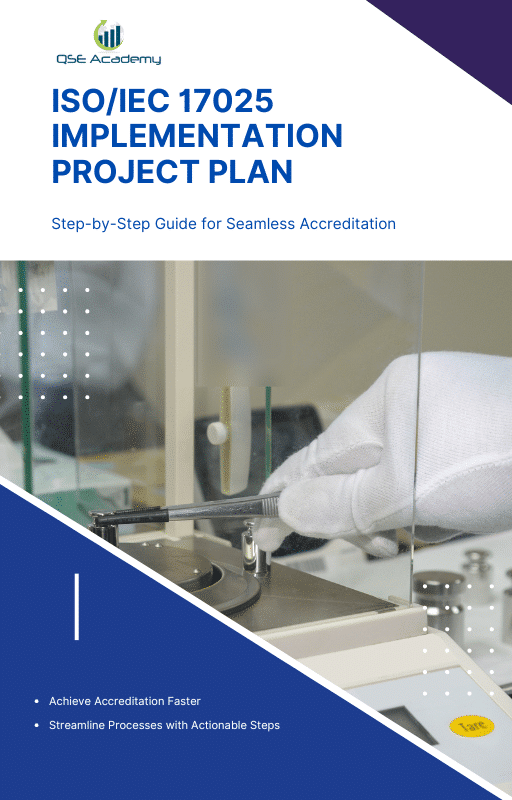Uncertainty in Measurement and How to Calculate It
Uncertainty in Measurement and How to Calculate It
Have you ever measured something twice and gotten two slightly different results? Maybe you used a ruler to measure a piece of fabric, and one time it was 10.2 cm, but the next time it looked like 10.3 cm. Or perhaps you weighed an object on a digital scale and saw the number flicker between 50.0g and 50.1g. This tiny difference in results is a perfect example of uncertainty in measurement—and it happens all the time, even with the most precise instruments.
But don’t worry! Uncertainty in measurement doesn’t mean your measurements are wrong or useless. It simply acknowledges that every measurement has some degree of variation due to factors like instrument limitations, environmental conditions, and even human perception. Instead of aiming for an impossible level of perfection, scientists, engineers, and industries work to understand, calculate, and minimize uncertainty in measurement so that their results are as reliable as possible.
Think about a doctor measuring blood pressure, an engineer testing the strength of materials, or a laboratory analyzing the purity of a chemical. In all these cases, uncertainty in measurement plays a crucial role in ensuring that decisions are based on accurate and trustworthy data. That’s why learning how to quantify and report uncertainty in measurement is an essential skill in science, engineering, manufacturing, and even everyday life.
In this article, we’ll break down exactly what uncertainty in measurement is, why it matters, and how you can calculate it step by step. Whether you’re working in a lab, manufacturing high-precision parts, or just curious about why measurements can vary, understanding uncertainty in measurement will help you make sense of the numbers and improve your accuracy. Let’s dive in!
What is Uncertainty in Measurement?
Let’s start with the basics: what exactly is uncertainty in measurement? Simply put, it’s the doubt that exists about the result of any measurement. No matter how precise an instrument is, or how careful you are, there will always be some level of uncertainty in measurement—and that’s completely normal!
Think about measuring the length of a table with a standard ruler. You might get 100.2 cm, but if you look from a slightly different angle or press the ruler differently, you might see 100.3 cm. That small variation is uncertainty in measurement in action. Even highly advanced digital instruments, like electronic balances or laser measuring tools, experience slight fluctuations in their readings.
Why Does Uncertainty in Measurement Exist?
There are several reasons why uncertainty in measurement happens, and understanding them helps us reduce and manage it effectively:
✅ Instrument Limitations: Every measuring tool has a certain level of precision. A kitchen scale might round to the nearest gram, while a laboratory scale measures down to the nearest microgram. The finer the precision, the smaller the uncertainty in measurement.
✅ Environmental Factors: Temperature, humidity, and even vibrations can influence uncertainty in measurement. For example, metal expands and contracts with temperature changes, which can slightly alter length measurements.
✅ Human Perception and Errors: If you’re using a manual tool, like a ruler or analog scale, your eyesight and hand positioning can introduce uncertainty in measurement. Even digital tools can be affected by the way they are used or maintained.
✅ Material Variations: Some materials change properties over time or in different conditions, affecting uncertainty in measurement. A wooden board, for example, may shrink slightly in dry conditions and expand in humidity.
The Role of Uncertainty in Measurement in Different Industries
Understanding uncertainty in measurement is crucial in many fields where precision is essential. Here’s how it impacts different industries:
🔬 In Laboratories: Whether analyzing chemical samples or measuring microscopic objects, scientists must calculate and report uncertainty in measurement to ensure their results are accurate and repeatable.
🏭 In Manufacturing: When producing parts for automobiles or airplanes, even a tiny variation can impact performance. That’s why manufacturers carefully monitor uncertainty in measurement to meet strict quality standards.
⚕️ In Healthcare: Medical tests, such as blood pressure readings or lab tests, must account for uncertainty in measurement to ensure accurate diagnoses and treatments.
🌍 In Environmental Science: Weather predictions, pollution monitoring, and climate studies rely on precise measurements. A miscalculated uncertainty in measurement can lead to incorrect conclusions about environmental trends.
Key Takeaway: Embracing Uncertainty in Measurement
Rather than being a problem, uncertainty in measurement is something to be understood and managed. Scientists, engineers, and professionals work to reduce and report it correctly so that measurements remain useful and meaningful.
Now that we know what uncertainty in measurement is and why it matters, let’s dive deeper into the different types of uncertainty and how they affect measurement accuracy!
Different Types of Uncertainty in Measurement
Now that we know uncertainty in measurement is unavoidable, let’s take a closer look at its different types. Understanding these categories helps us figure out where uncertainty comes from and how we can manage it effectively.
In general, uncertainty in measurement falls into two main types: systematic uncertainty and random uncertainty. Let’s break them down in a simple and relatable way.
1. Systematic Uncertainty: The Predictable Type
Systematic uncertainty is like that one friend who is always 10 minutes late—predictable and consistent. This type of uncertainty in measurement happens when there’s a bias in the measuring system, meaning the same kind of error occurs every time you take a measurement.
Common Causes of Systematic Uncertainty in Measurement:
✅ Instrument Calibration Errors – If a scale is slightly off by 0.2g, every measurement you take with it will be affected.
✅ Environmental Influences – Changes in temperature, humidity, or even air pressure can create small, consistent shifts in measurements.
✅ Observer Bias – If you always round up or down when reading an analog scale, you introduce a systematic shift in your results.
How to Reduce Systematic Uncertainty in Measurement:
🔹 Regularly calibrate measuring instruments to ensure accuracy.
🔹 Use reference materials (such as certified weights) to check for bias.
🔹 Keep measuring conditions stable—avoid extreme temperature or humidity changes.
💡 Think of systematic uncertainty like a ruler that’s slightly too short. Every time you measure with it, your results will be off in the same way, but knowing the error allows you to correct it!
2. Random Uncertainty: The Unpredictable Type
Random uncertainty is the more unpredictable kind—it’s like tossing a coin and getting slightly different results every time. This type of uncertainty in measurement happens due to small, uncontrollable variations in the measuring process.
Common Causes of Random Uncertainty in Measurement:
✅ Fluctuations in Instrument Readings – Digital devices might display tiny variations in numbers when measuring the same object multiple times.
✅ Human Inconsistency – No two people will measure exactly the same way when using manual tools like rulers or stopwatches.
✅ Material Instability – Some materials, like liquids or biological samples, can change slightly over time, affecting measurements.
How to Reduce Random Uncertainty in Measurement:
🔹 Take multiple measurements and calculate the average for more reliable results.
🔹 Use high-precision instruments with finer measurement resolution.
🔹 Follow consistent measurement techniques to reduce human error.
💡 Think of random uncertainty like measuring your height several times in a day—small variations might occur due to posture, but averaging the results gives you the most accurate estimate!
3. Combined Uncertainty: The Full Picture
In reality, most uncertainty in measurement is a combination of both systematic and random uncertainties. That’s why professionals in laboratories, engineering, and research don’t just focus on one type—they calculate and express total measurement uncertainty using standardized methods.
How to Manage Combined Uncertainty in Measurement:
✅ Identify and correct systematic errors first (such as recalibrating instruments).
✅ Minimize random errors by taking multiple measurements.
✅ Use statistical methods (like standard deviation) to quantify uncertainty in measurement.
Final Thoughts: Why Understanding Uncertainty in Measurement Matters
Knowing whether uncertainty in measurement is systematic or random helps us decide how to improve accuracy. Systematic errors can often be corrected, while random errors can be minimized by taking repeated measurements and using better tools.
Now that we understand the types of uncertainty in measurement, let’s dive into the next big question—how do we actually calculate it? Stay with me as we go step by step through the process!
How to Calculate Uncertainty in Measurement
Now that we understand the different types of uncertainty in measurement, the next step is figuring out how to calculate it. Whether you’re working in a laboratory, an engineering workshop, or even measuring ingredients for a recipe, knowing how to quantify uncertainty in measurement helps ensure accuracy and reliability.
But don’t worry—this isn’t as complicated as it sounds! Let’s break it down into simple steps.
Step 1: Identify the Sources of Uncertainty
Before we can calculate uncertainty in measurement, we need to identify where it comes from. Think about all the possible factors that could introduce small errors into your measurements.
✅ Instrument Precision – How accurate is your measuring tool? Every instrument has a level of precision (e.g., a ruler marked in millimeters is more precise than one marked in centimeters).
✅ Environmental Conditions – Is temperature, humidity, or vibration affecting the measurement?
✅ Human Factors – Are different people measuring slightly differently? Is there a chance of misreading an analog scale?
✅ Reproducibility Issues – If you measure the same object multiple times, do you always get the same result?
💡 Identifying these sources of uncertainty in measurement helps us understand what we’re dealing with before doing the math!
Step 2: Take Multiple Measurements
Since random uncertainty in measurement causes small variations in results, we need multiple measurements to get an accurate picture.
1️⃣ Measure the same object at least 5-10 times using the same instrument.
2️⃣ Record each measurement carefully—no rounding yet!
3️⃣ Look for variation in the readings—are they all close together, or do they differ slightly?
💡 More measurements = better understanding of uncertainty in measurement!
Step 3: Calculate the Mean (Average) Measurement
Once you have your measurements, the next step is finding the mean (or average) value. This gives us the best estimate of the “true” value of what we’re measuring.
📌 Formula for the mean:
Mean=∑All MeasurementsNumber of Measurements\text{Mean} = \frac{\sum \text{All Measurements}}{\text{Number of Measurements}}
For example, if your measurements (in cm) were:
10.2, 10.3, 10.1, 10.2, and 10.3
Mean=10.2+10.3+10.1+10.2+10.35=10.22 cm\text{Mean} = \frac{10.2 + 10.3 + 10.1 + 10.2 + 10.3}{5} = 10.22 \text{ cm}
💡 The mean is a key reference point for calculating uncertainty in measurement.
Step 4: Determine the Standard Deviation (Random Uncertainty)
Since uncertainty in measurement often comes from random variations, we use standard deviation to measure how spread out the values are. A smaller standard deviation means the measurements are more consistent.
📌 Formula for standard deviation (σ):
σ=∑(xi−xˉ)2N−1\sigma = \sqrt{\frac{\sum (x_i – \bar{x})^2}{N – 1}}
Where:
- xix_i = each individual measurement
- xˉ\bar{x} = mean value
- NN = number of measurements
This step tells us how much our measurements fluctuate and is a key part of expressing uncertainty in measurement.
💡 If this looks scary, don’t worry! Many calculators and Excel/Google Sheets can compute standard deviation for you.
Step 5: Calculate the Combined Uncertainty
If multiple sources contribute to uncertainty in measurement (e.g., instrument precision + environmental conditions), we need to combine them.
📌 Formula for combined uncertainty (U):
U=(U1)2+(U2)2+(U3)2+…U = \sqrt{(U_1)^2 + (U_2)^2 + (U_3)^2 + …}
Where:
- U1,U2,U3U_1, U_2, U_3 are the individual uncertainty values from different sources.
This method, called the Root Sum of Squares (RSS) method, ensures we properly account for all contributions to uncertainty in measurement.
Step 6: Express the Final Measurement with Uncertainty
The final step is reporting your measurement with its uncertainty. Instead of just saying, “The object is 10.22 cm,” we express it as:
📌 Final result format:
Measured value±Uncertainty(Confidence Level)\text{Measured value} \pm \text{Uncertainty} (\text{Confidence Level})
For example:
10.22 \pm 0.05 \text{ cm (with 95% confidence)}
This tells others how much uncertainty in measurement exists and gives a realistic range where the actual value likely falls.
💡 Confidence levels (like 95%) tell us how sure we are that the true value is within this range.
Final Thoughts: Making Sense of Uncertainty in Measurement
Calculating uncertainty in measurement may seem technical, but at its core, it’s about understanding and improving accuracy. By identifying sources of error, taking multiple measurements, using statistical tools like standard deviation, and reporting uncertainty clearly, we make our data more reliable and useful.
Now that we know how to calculate uncertainty in measurement, let’s move on to how we can minimize it in real-world applications!
How to Minimize Uncertainty in Measurement
Now that we know how to calculate uncertainty in measurement, the next step is figuring out how to reduce it. While we can’t completely eliminate uncertainty in measurement—because no measurement is 100% perfect—we can take steps to make our results as accurate and reliable as possible.
Let’s explore some practical ways to minimize uncertainty in measurement in laboratories, manufacturing, engineering, and even everyday measurements.
1. Use High-Quality, Calibrated Instruments
The accuracy of a measurement is only as good as the tool used to take it. If an instrument is not precise or hasn’t been calibrated recently, it will introduce uncertainty in measurement before you even start.
✅ Use instruments with the appropriate resolution – A ruler that measures in millimeters is more precise than one that only measures in centimeters.
✅ Regularly calibrate instruments – Calibration ensures your measuring tools are accurate against known standards.
✅ Use certified reference materials – These help validate that an instrument is working correctly.
💡 Think of calibration like tuning a guitar—if it’s not done regularly, everything will be slightly off!
2. Improve Measurement Techniques
Even the best tools won’t help if the person using them is inconsistent. Measurement techniques play a huge role in reducing uncertainty in measurement.
✅ Take multiple readings and average them – This minimizes random errors and provides a more reliable result.
✅ Measure under stable conditions – Avoid unnecessary movement, vibrations, or external factors that could affect the reading.
✅ Follow standardized procedures – Stick to consistent methods every time you take a measurement.
💡 Think of this like making coffee—if you use different amounts of water or coffee grounds each time, the taste will always be slightly different. Consistency is key!
3. Control Environmental Factors
The environment where you take a measurement can have a big impact on uncertainty in measurement. Small changes in temperature, humidity, air pressure, or even lighting can affect results.
✅ Maintain a stable temperature – Heat can cause materials to expand, affecting length measurements.
✅ Reduce vibrations – Sensitive scales and measuring devices can be influenced by even small shakes.
✅ Minimize humidity effects – Moisture can alter the weight or dimensions of certain materials.
💡 Think about weighing flour in a humid kitchen—moisture in the air can slightly increase the weight without you even noticing!
4. Reduce Human Error in Measurement
When humans are involved in taking measurements, errors can happen due to perception, handling, or reading instruments incorrectly.
✅ Use digital tools when possible – Digital instruments minimize manual reading errors.
✅ Train personnel in proper measurement techniques – A well-trained person can reduce uncertainty in measurement significantly.
✅ Avoid parallax errors – When using analog scales or rulers, always view the measurement from a straight-on angle.
💡 Ever read the fuel gauge in your car from the passenger seat and thought it looked different? That’s a parallax error—viewing from the wrong angle creates measurement uncertainty!
5. Increase Sample Size and Replicate Measurements
If uncertainty in measurement is caused by random variations, one of the best ways to minimize it is by increasing the number of measurements.
✅ Take repeated measurements – The more data points you have, the more accurate your average measurement will be.
✅ Use statistical tools like standard deviation – These help quantify and reduce uncertainty.
✅ Cross-check results – If possible, use a different instrument or method to verify the measurement.
💡 Imagine flipping a coin just once—it might land on heads, but that doesn’t mean heads is more likely. The more times you flip, the clearer the true probability becomes. The same goes for measurements!
Final Thoughts: Striving for Accuracy While Managing Uncertainty in Measurement
While uncertainty in measurement will always exist, the goal is to make it as small as possible so that our results remain reliable. By using high-quality instruments, refining measurement techniques, controlling environmental factors, reducing human errors, and increasing sample sizes, we can significantly minimize uncertainty in measurement in any setting.
Now that we know how to reduce uncertainty in measurement, let’s explore how to report and express measurement uncertainty so that results are clear and meaningful!
How to Report and Express Uncertainty in Measurement
Now that we’ve learned how to calculate and minimize uncertainty in measurement, the next step is knowing how to report it correctly. After all, what good is a precise measurement if no one understands how reliable it is?
In science, engineering, and industry, properly expressing uncertainty in measurement ensures that others can interpret your results with confidence. Let’s go through the best ways to communicate uncertainty in measurement in a clear and standardized way.
1. Expressing Measurement Uncertainty with the ± Symbol
One of the simplest and most common ways to report uncertainty in measurement is using the ± (plus-minus) symbol. This tells us that the true value of a measurement likely falls within a given range.
📌 Example:
If you measure the length of a metal rod and find it to be 15.25 cm ± 0.02 cm, this means:
- The measured value is 15.25 cm
- The uncertainty in measurement is ± 0.02 cm, meaning the actual length could be anywhere between 15.23 cm and 15.27 cm
💡 Think of this like estimating how long it will take to drive somewhere. You might say, “It will take 30 minutes, give or take 5 minutes,” which is another way of expressing uncertainty!
2. Confidence Levels and Uncertainty Intervals
When reporting uncertainty in measurement, it’s important to indicate how confident we are that the true value falls within the stated range. Scientists and engineers often use confidence levels to express this.
✅ Common confidence levels:
- 95% confidence level (most commonly used)
- 99% confidence level (higher certainty, but requires more data)
📌 Example:
🔹 100.5 g ± 0.3 g (95% confidence level)
This means there’s a 95% chance that the true value lies between 100.2 g and 100.8 g.
💡 Confidence levels help people understand how reliable a measurement is. It’s like saying, “I’m 95% sure it will rain today.”
3. Expanded Uncertainty and Coverage Factor (k-Factor)
For high-precision measurements, especially in metrology (the science of measurement), uncertainty is often expressed using a coverage factor (k), which adjusts the uncertainty based on the level of confidence.
✅ Common k-values:
- k = 1 (covers about 68% of possible values)
- k = 2 (covers about 95% of possible values)
- k = 3 (covers about 99.7% of possible values)
📌 Example:
🔹 Temperature measurement: 37.0°C ± 0.2°C (k=2, 95% confidence)
This means that if we repeated the measurement many times, 95% of the results would fall within ±0.2°C of 37.0°C.
💡 Think of k-factors like setting different levels of caution. A higher k-factor means a wider safety net for possible values!
4. Reporting Uncertainty in Measurement in Scientific and Industrial Reports
In formal reports, uncertainty in measurement is usually presented in a standardized format to ensure clarity. Here’s how professionals document it:
✅ In Tables:
| Measurement | Value | Uncertainty | Confidence Level |
|---|---|---|---|
| Mass of Sample | 250.00 g | ± 0.10 g | 95% |
| Temperature | 22.5°C | ± 0.3°C | 95% |
| Voltage | 5.000 V | ± 0.002 V | 99% |
✅ In Graphs:
- Error bars in charts visually show uncertainty in measurement, making it easier to interpret.
💡 Just like nutritional labels on food packages show “estimated daily values,” measurement reports need to clearly state their uncertainty for proper interpretation!
5. Common Mistakes to Avoid When Reporting Measurement Uncertainty
Even when people calculate uncertainty in measurement correctly, they sometimes make reporting mistakes. Here’s what to watch out for:
🚫 Forgetting to include uncertainty in reports – A measurement without stated uncertainty is incomplete!
🚫 Not specifying the confidence level – Always clarify whether the uncertainty is based on a 95% or 99% confidence level.
🚫 Overstating precision – If an instrument measures to the nearest 0.1 mm, don’t report results down to 0.001 mm.
🚫 Confusing accuracy with precision – A measurement can be precise (consistent) but still inaccurate (off from the true value).
💡 Think of a weather forecast—if it says “25°C,” but doesn’t mention the uncertainty, you don’t know if it could actually be anywhere from 24°C to 26°C!
Final Thoughts: Why Clear Reporting of Uncertainty in Measurement Matters
By properly reporting uncertainty in measurement, we ensure that results are transparent, reliable, and scientifically valid. Whether in a research paper, a manufacturing quality control report, or a medical test result, expressing uncertainty in measurement allows others to understand the limits of precision and make informed decisions.
Now that we’ve covered how to report and express uncertainty in measurement, let’s look at some real-world examples where measurement uncertainty plays a critical role!
Real-World Examples of Uncertainty in Measurement
Now that we’ve covered how to calculate, minimize, and report uncertainty in measurement, let’s look at how it plays a crucial role in real-world applications. From scientific research to everyday tasks, uncertainty in measurement affects industries, safety, and decision-making more than we might realize.
1. Uncertainty in Measurement in Medical Testing
When you get a blood test or have your temperature checked, do you ever wonder how accurate those results are? Medical tests rely heavily on uncertainty in measurement because even a small variation in results can impact diagnoses and treatments.
✅ Example: Measuring Blood Pressure
A doctor measures a patient’s blood pressure and records 120/80 mmHg ± 5 mmHg. The ± 5 mmHg represents the uncertainty in measurement, meaning the actual blood pressure could be slightly higher or lower.
✅ Why It Matters:
- If the uncertainty is too high, doctors might misdiagnose a patient with high blood pressure when they’re actually fine.
- Regular calibration of medical equipment helps reduce uncertainty in measurement, ensuring reliable results.
💡 Imagine being diagnosed with a fever based on a thermometer reading that fluctuates wildly—understanding the uncertainty ensures doctors don’t overreact or underestimate symptoms!
2. Uncertainty in Measurement in Engineering and Manufacturing
Precision is critical in industries like aerospace, automotive, and electronics manufacturing. A small error in measurement could mean the difference between a perfectly fitting part and a defective product.
✅ Example: Car Engine Parts Manufacturing
A company manufactures pistons for car engines, and each piston must be 75.00 mm ± 0.02 mm in diameter. The uncertainty in measurement ensures that all pistons fit correctly within the engine.
✅ Why It Matters:
- If a piston is too large, it won’t fit; if it’s too small, it may cause inefficiencies.
- Reducing uncertainty in measurement through high-precision tools and regular calibration improves product quality.
💡 Imagine if airplane components weren’t measured with precision—just a small error could lead to major safety risks!
3. Uncertainty in Measurement in Environmental Monitoring
From tracking climate change to measuring air quality, environmental scientists rely on accurate data, and uncertainty in measurement helps determine how much confidence they can have in their findings.
✅ Example: Measuring Air Pollution
A pollution sensor detects PM2.5 (fine particulate matter) levels at 35 µg/m³ ± 2 µg/m³. The uncertainty in measurement tells scientists that the actual air pollution level could be slightly higher or lower.
✅ Why It Matters:
- Governments use pollution data to issue air quality warnings—higher uncertainty means less confidence in those warnings.
- Reducing uncertainty in measurement improves public health decisions and climate change research.
💡 Think of it like checking the weather forecast—if the uncertainty is too high, you might not know whether to bring an umbrella or wear sunglasses!
4. Uncertainty in Measurement in Sports and Athletics
Even in competitive sports, uncertainty in measurement plays a role in determining winners and setting records.
✅ Example: Timing in the 100m Sprint
A race time is recorded as 9.85 seconds ± 0.01 seconds. This means the true time could be slightly faster or slower due to uncertainty in measurement from reaction times of the timing system.
✅ Why It Matters:
- In events where milliseconds make a difference, small uncertainty in measurement can influence rankings.
- Using advanced laser timers and electronic sensors helps reduce uncertainty in measurement.
💡 Imagine an Olympic gold medal being decided by a margin smaller than the uncertainty of the timing system—it could change history!
5. Uncertainty in Measurement in Everyday Life
You don’t need to be a scientist or engineer to deal with uncertainty in measurement—it affects daily activities more than you might think!
✅ Example: Cooking and Baking
A recipe calls for 250g ± 5g of flour. The uncertainty in measurement means that slight variations in weight are acceptable without ruining the recipe.
✅ Example: Fuel Efficiency in Cars
A car’s fuel consumption is measured at 7.5 L/100 km ± 0.3 L/100 km. The uncertainty in measurement accounts for variations in driving conditions, weather, and fuel quality.
💡 Ever poured coffee into a cup and accidentally spilled some? That’s an example of measurement uncertainty in action—you estimated, but there was still some variation!
Final Thoughts: The Importance of Uncertainty in Measurement
Whether in medicine, manufacturing, environmental science, sports, or daily activities, uncertainty in measurement is everywhere. Understanding and managing it allows us to make better decisions, improve accuracy, and ensure safety in critical applications.
Now that we’ve seen real-world examples, let’s wrap up by summarizing why uncertainty in measurement is so important and how embracing it leads to better scientific and industrial practices!
Common Mistakes in Understanding Uncertainty in Measurement
Even though uncertainty in measurement is a well-established concept in science, engineering, and everyday applications, it’s often misunderstood. Many people assume that uncertainty means inaccuracy, but that’s not the case! Let’s go over some of the most common mistakes people make when dealing with uncertainty in measurement and how to avoid them.
1. Confusing Uncertainty with Error
🚫 Mistake: Many people think that uncertainty in measurement is the same as making a mistake or having an error in the measurement. However, uncertainty is not an error—it’s simply an acknowledgment that no measurement can be 100% exact.
✅ How to Avoid It:
- Understand that uncertainty in measurement represents a natural and expected variation in results, not a mistake.
- Errors are incorrect measurements that can be avoided, while uncertainty is an inherent part of every measurement.
💡 Think of it like estimating your commute time. You might say it takes 30 minutes ± 5 minutes. The ± 5 minutes isn’t a mistake—it just acknowledges natural variation due to traffic and stoplights!
2. Reporting Measurements Without Stating Uncertainty
🚫 Mistake: Giving a measurement without including uncertainty in measurement can mislead others into thinking the number is absolute.
✅ How to Avoid It:
- Always report measurements with an uncertainty range (e.g., 5.72 cm ± 0.02 cm).
- If you’re reading data from a source, check whether the uncertainty in measurement has been provided—if not, the results may be misleading.
💡 Would you trust a weather forecast that just says “rain” without any details? No! The forecast should include percentages, just like measurements should include uncertainty to indicate confidence levels.
3. Ignoring Instrument Precision and Resolution
🚫 Mistake: Using a measuring tool with a resolution that’s too low can introduce unnecessary uncertainty in measurement.
✅ How to Avoid It:
- Choose the right instrument for the required level of precision. A kitchen scale measuring in grams is fine for cooking, but a laboratory balance measuring in micrograms is needed for scientific research.
- Always check the smallest unit your instrument can measure and don’t assume it’s more precise than it actually is.
💡 Would you use a car’s odometer to measure the length of a pencil? Probably not! The resolution is too low for that level of detail.
4. Assuming a Single Measurement is Enough
🚫 Mistake: Relying on just one measurement without considering natural variations can lead to inaccurate conclusions.
✅ How to Avoid It:
- Always take multiple measurements and calculate an average to reduce uncertainty in measurement.
- Use statistical methods like standard deviation to understand how much variation exists in repeated measurements.
💡 Think of shooting basketballs—if you take one shot and miss, does that mean you’re bad at basketball? No! You need multiple attempts to truly measure your accuracy.
5. Overlooking Environmental Factors
🚫 Mistake: Assuming that measurements are consistent in all conditions without considering external influences like temperature, humidity, or vibrations.
✅ How to Avoid It:
- Always measure under stable and controlled conditions whenever possible.
- Be aware that changes in the environment (like heat causing materials to expand) can impact uncertainty in measurement.
💡 Think of a metal ruler left in the sun—it might expand slightly, making length measurements slightly off!
6. Misinterpreting Confidence Levels and Uncertainty Ranges
🚫 Mistake: Assuming that uncertainty in measurement means we’re unsure of our results, rather than understanding it as a range of likely values.
✅ How to Avoid It:
- Recognize that confidence levels (like 95%) simply mean that if we repeated the measurement many times, 95% of the values would fall within the given uncertainty range.
- Understand that a lower uncertainty in measurement means a higher confidence in the results.
💡 Imagine you’re estimating the height of a basketball player. Saying “He’s about 6’5” ± 1 inch” means you’re fairly certain he’s between 6’4” and 6’6” rather than completely unsure.
Final Thoughts: Learning from Mistakes in Measurement Uncertainty
Understanding uncertainty in measurement is key to making better scientific, industrial, and everyday decisions. By avoiding these common mistakes—such as confusing uncertainty with error, ignoring instrument limitations, or failing to report uncertainty clearly—we can improve the accuracy and reliability of our measurements.
Now that we’ve covered the biggest misconceptions, let’s wrap up with a final look at why embracing uncertainty in measurement is essential for precision and progress!
Final Thoughts: Embracing Uncertainty in Measurement for Accuracy and Reliability
At this point, we’ve explored uncertainty in measurement from every angle—what it is, how to calculate it, how to minimize it, and even common mistakes to avoid. But here’s the big takeaway: uncertainty in measurement isn’t a flaw—it’s an essential part of every measurement process.
Instead of seeing uncertainty in measurement as a problem, we should think of it as a tool that helps us understand how much confidence we can have in our results. Whether you’re working in a laboratory, designing a product, or simply measuring ingredients in your kitchen, knowing how to handle uncertainty in measurement makes you a better decision-maker.
Why Understanding Uncertainty in Measurement Matters
✅ It Improves Accuracy – Acknowledging and reducing uncertainty in measurement ensures that results are as close to reality as possible.
✅ It Enhances Scientific and Engineering Practices – From medical tests to space missions, precise measurements with clearly stated uncertainty are essential for innovation and safety.
✅ It Builds Trust in Data – When measurements include a well-calculated uncertainty in measurement, they provide a realistic picture rather than misleading precision.
✅ It Helps Make Better Decisions – Whether in healthcare, manufacturing, or environmental science, accounting for uncertainty in measurement allows for informed and responsible choices.
The Future of Measurement and Uncertainty
With advancements in technology, measuring tools are becoming more precise, and our ability to quantify uncertainty in measurement is improving. Artificial intelligence, automation, and real-time data analysis are helping reduce errors and provide more accurate estimates of uncertainty.
However, no matter how advanced our tools become, uncertainty in measurement will always exist. The goal isn’t to eliminate it (because that’s impossible) but to understand, manage, and report it correctly.
Final Words: The Power of Acknowledging Measurement Uncertainty
So, the next time you take a measurement—whether it’s a scientific experiment, a quality check, or a simple home improvement task—remember: uncertainty in measurement is always present. The key is to recognize it, quantify it, and communicate it effectively.
By embracing uncertainty in measurement, we’re not just improving the accuracy of our results—we’re ensuring that every decision we make is based on the best possible data. And that, in the world of measurement, is what truly matters. 🚀
Would you like any adjustments, additional perspectives, or a follow-up section on practical tools to measure uncertainty? Let me know!
I hold a Master’s degree in Quality Management, and I’ve built my career specializing in the ISO/IEC 17000 series standards, including ISO/IEC 17025, ISO 15189, ISO/IEC 17020, and ISO/IEC 17065. My background includes hands-on experience in accreditation preparation, documentation development, and internal auditing for laboratories and certification bodies. I’ve worked closely with teams in testing, calibration, inspection, and medical laboratories, helping them achieve and maintain compliance with international accreditation requirements. I’ve also received professional training in internal audits for ISO/IEC 17025 and ISO 15189, with practical involvement in managing nonconformities, improving quality systems, and aligning operations with standard requirements. At QSE Academy, I contribute technical content that turns complex accreditation standards into practical, step-by-step guidance for labs and assessors around the world. I’m passionate about supporting quality-driven organizations and making the path to accreditation clear, structured, and achievable.

